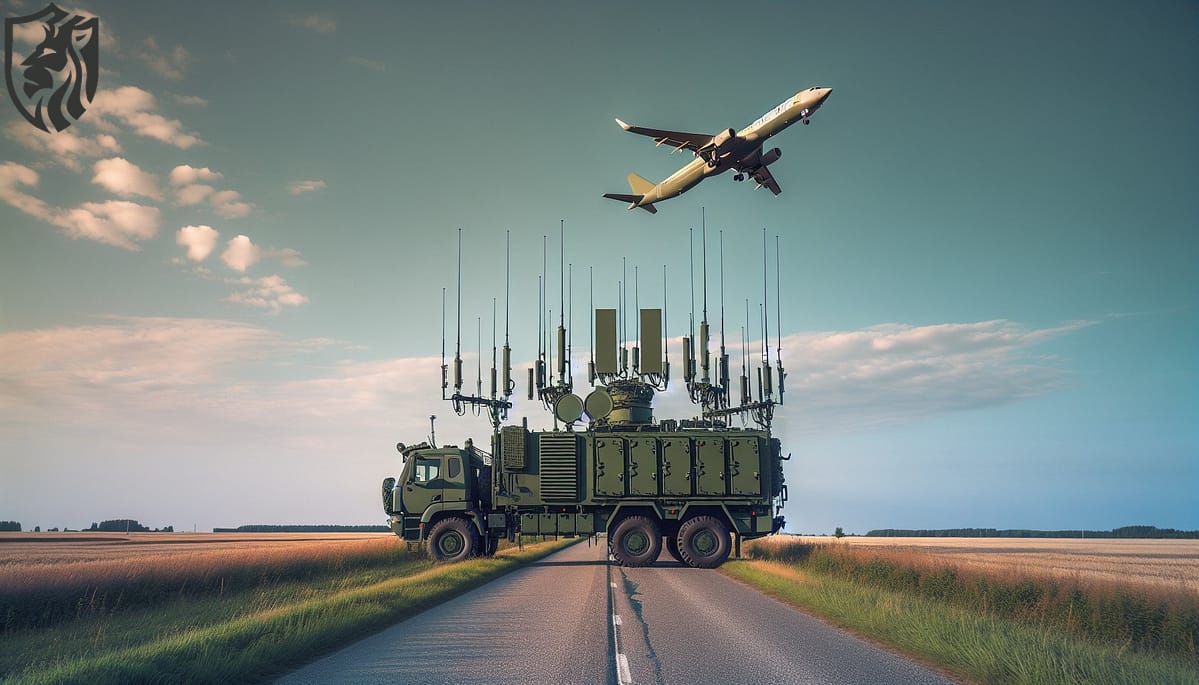
Russian Tobol EW
The new Russian Tobol EW system is making headlines for its advanced capabilities in disrupting long-range missile navigation and military satellite operations. This cutting-edge electronic warfare (EW) system has elevated Russia’s strategic capabilities, leaving the Pentagon and other NATO powers increasingly concerned. With systems like Borshtevik and Kosmos satellites adding to the mix, the new Russian Tobol EW system is part of a broader Russian effort to dominate in space and ground-based electronic warfare.

Understanding the Tobol EW System
The new Russian Tobol EW system is designed to jam the navigation systems of long-range missiles, rendering them ineffective in hitting their targets. This system works by sending electronic interference signals that disrupt the missile’s internal GPS and guidance mechanisms. In an age where precision is key to missile effectiveness, the new Russian Tobol EW system can drastically reduce the impact of incoming missile threats.
By integrating advanced radio-electronic technology, the new Russian Tobol EW system enhances battlefield survivability for Russian military forces. Jamming the guidance systems of missiles is just one aspect of this sophisticated technology. Tobol operates in conjunction with other systems, such as Borshtevik, to create a comprehensive EW shield around Russian assets.
Borshtevik: Starlink’s Nemesis
Part of the ecosystem of the new Russian Tobol electronic warfare system is the Borshtevik direction finder. This device detects and jams Starlink terminals used heavily in Ukraine and by NATO forces for communication. The Borshtevik direction finder, integrated into the Tobol EW System, pinpoints Starlink terminals with five-metre accuracy from 20 kilometres away.
Once located, operators jam these terminals through radio-electronic warfare, cutting communication instantly. Borshtevik can also send the coordinates to Russian artillery and aerospace forces for strikes. This enables Russian forces to destroy enemy terminals with precision targeting. Such capability makes the Tobol EW System a serious threat to NATO’s dependence on Starlink.
Kosmos-2504 and Satellite Warfare
Russia’s new Tobol EW system extends beyond ground operations. It also extends into space, where Russia has been making bold moves with its Kosmos satellites. The Kosmos-2504 and its predecessor, Kosmos-2499, are highly manoeuvrable satellites with extensive fuel reserves. These satellites can position themselves between American military satellites and their target areas, effectively blocking surveillance activities.
This tactic, referred to as “satellite shadowing,”, prevents US satellites from collecting critical intelligence. Despite multiple warnings from the Pentagon, Russia continues these operations. The New Russian Tobol EW System is complemented by Kosmos-2504’s ability to engage in close-proximity operations, meaning it can potentially bump into or even destroy American satellites if needed.
Kosmos-2504 could cause significant disruptions by simply altering its orbit or using its fuel to manoeuvre into the path of an enemy satellite. This aggressive stance in space underscores Russia’s growing confidence in its EW capabilities. The New Russian Tobol EW System, when paired with Kosmos-2504, represents a formidable challenge for US and NATO forces trying to maintain space superiority.
Russia’s Nuclear Option in Space Warfare
One of the most alarming aspects of the new Russian Tobol EW system is its potential to engage in nuclear warfare in space. Russia reportedly possesses satellites equipped with mini nuclear bombs designed to detonate along the trajectory of NATO satellites. This method, though never officially confirmed, is suspected to be a key part of Russia’s plan to incapacitate Western surveillance and communication networks in the event of an all-out war.
Detonating such bombs in space would create an electromagnetic pulse (EMP) that could knock out NATO satellites in minutes. The new Russian Tobol EW system, combined with these nuclear-armed satellites, underscores the increasing role that space warfare will play in future conflicts.
Response from the Pentagon and NATO
The New Russian Tobol EW System and its associated technologies have caused alarm within NATO and the Pentagon. Officials have issued multiple warnings to Russia about its aggressive satellite tactics. However, Moscow’s stance remains defiant. Russia has repeatedly signalled that its EW systems, particularly the new Russian Tobol EW system, are crucial for protecting its interests.

NATO’s reliance on satellites like Starlink for military operations makes the new Russian Tobol EW system a direct threat to Western military strategy. Disrupting missile guidance is a serious provocation that could escalate tensions between Russia and NATO, along with disabling Starlink terminals and potentially destroying satellites.
Future of Electronic Warfare: Russia’s Dominance
As Russia continues to invest in its EW capabilities, the new Russian Tobol EW system will likely become an important component of future military strategies. The combination of jamming technologies, advanced satellite warfare tactics, and the potential use of nuclear devices in space indicates that Russia is preparing for a new era of electronic and space-based warfare.
With NATO scrambling to counter these capabilities, the new Russian Tobol EW system represents a significant leap in military technology. As tensions rise, the world will be watching closely to see how Russia’s EW systems impact the global balance of power.
Conclusion
The new Russian Tobol EW system is changing modern warfare. It can jam missile navigation, disable Starlink, and threaten Western satellites. The perception of Russia as a formidable force in electronic and space warfare has grown.
Kosmos-2504’s manoeuvrability raises concerns about possible nuclear attacks in space. These concerns are growing among military analysts worldwide. NATO and the Pentagon are closely tracking Russia’s advancements. The Tobol EW System will likely remain a key focus in future strategies.
References
- The War Zone – thedrive.com
- Jane’s Defence News – janes.com
- Bulgarian Military – bulgarianmilitary.com
- Space News – spacenews.com
- Defense One – defenseone.com
- Arms Control Association – armscontrol.org
- NATO Review – nato.int/review
- Defence News Today – defensenewstoday.info
- Pakistan Defence Forum – facebook.com/groups/pakistandefenseforum






